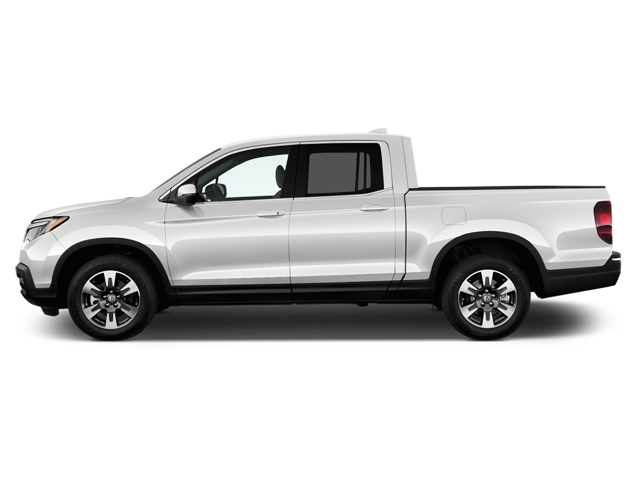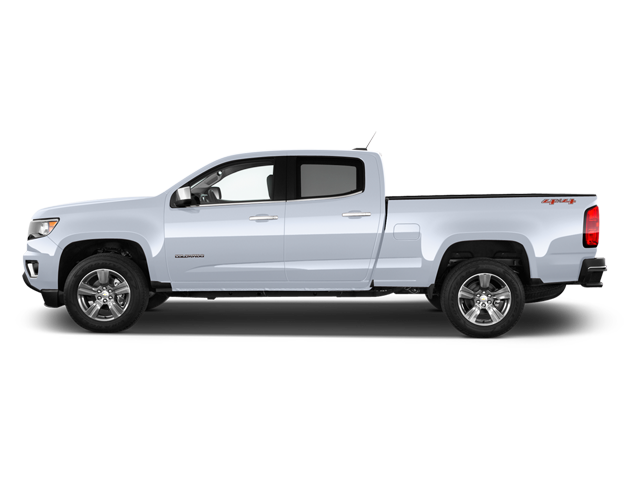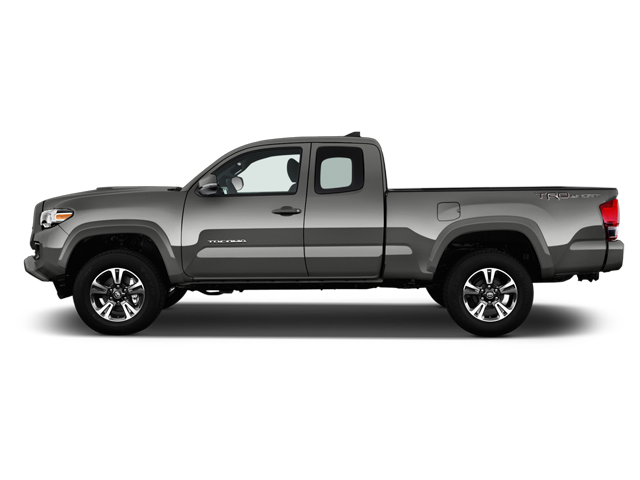On the surface, when the original Honda Ridgeline debuted in 2005, it was a bit of an anomaly here in Canada. Obviously, we’d seen trucks before, from brands with blue ovals and bowties and wildlife on their snouts. Those were trucks: body-on-frame construction, 4x4 powertrain, gasoline V8 or diesel power, low-ratio rear axles, and column-mounted shift levers. They could drive through snow, through mud, through streams, and over rocks, all while towing boats and RVs, flatbeds and work equipment.
And then came Honda with a unibody vehicle of some sort that was essentially a Honda Pilot SUV with no roof over its rear cargo area. What was that about? Not to mention it bore a striking similarity with the Chevy Avalanche, which was already kind of an anomaly itself.
Still, a year after it first went on sale, Honda managed to sell almost 5,000 Ridgelines in Canada, which wasn’t that far behind the Avalanche numbers. However, Ridgeline sales began to decline immediately after, although they briefly spiked in 2012-2013, while its Pilot twin continued to trend mostly upward.
Here’s the thing with the Honda Ridgeline, though: It was never really positioned to do battle with the Silverados and F-150s of the world. Indeed, it was always a little more of a lifestyle vehicle, a possible alternative for SUV and CUV buyers who wanted a little more “utility” to go with their “sport”, but also wanted to be comfortable and use less gas. Now, they could have a pickup that drove like an SUV, but could more easily haul extra stuff.
After the first generation hit nine years, it was clear that it was time not just for a refresh, but for an entirely new vehicle. The Ridgeline was facing new competition from a rejuvenated light-truck market where GM and Toyota had come to play—and seriously so—with models like the Colorado and Tacoma.
Change one, change two
Luckily for the Honda Ridgeline (and prospective Ridgeline buyers), the 2016 model year saw the arrival of an all-new Pilot, so you knew that a Ridgeline variant couldn’t be far behind. Sure enough, for 2017, an all-new Ridgeline went from fantasy to reality.
Ignore the pickup bed for a minute, and there’s very little to distinguish the Ridgeline from the Pilot. Yes, it’s higher, longer, and has a bigger gap between the front and rear axles, but the differences are almost imperceptible to the naked eye, especially considering you can only get the Ridgeline as a crew cab model. Seen from dead-on, the connection between the two is even stronger as the headlights, grille, and front bumper are pretty much exactly the same.
It’s a similar story inside. The dashboard is almost identical to the Pilot’s, although the new Ridgeline does swap the SUV’s newfangled push-button gear selector for a more traditional lever, emphasizing its utilitarian side to please many truck guys.
The offshoot of all this, of course, is that the 2017 Honda Ridgeline has a much more attractive and car-like interior than any other pickup you may come across. Forget the Pilot; the abundance of soft-touch materials (especially in the top-spec Black Edition seen here), the chunky and button-laden steering wheel, and the modern centre stack wouldn’t look out of place in a CR-V crossover or Accord sedan. Same goes for the seats, which are well padded and covered in Black Edition-spec ventilated leather with red accents. As for fit and finish, there’s very little to complain about.
What is a little tougher to deal with are the rear seats. While the second-gen Ridgeline is bigger, the Pilot offers more room back there, and you can really feel it. I was honestly surprised by how tight it was when I tried to cram my 6’3” frame in behind the Ridgeline’s driver’s seat; my knees were pressed fairly firmly against the seatback. On the other hand, kids should have no problem in these environs, and you can also fit a baby seat, so this remains a vehicle that could be used by the whole family.
Another option is to flip the seat bottoms up, revealing a floor that’s bereft of an intrusive transmission tunnel for easier loading. Plus, there’s hidden storage underneath. The floor is not completely flat (there’s a channel in which the seats are anchored when they’re down), but it’s a sacrifice I’d happily make if it meant not having to deal with an intrusive tunnel.
Tricky tech
Like much of its Honda brethren, the 2017 Ridgeline makes use of a touch-heavy infotainment interface, accessed via a 7” screen atop the centre stack. It’s an all-touch affair—there isn’t even a knob for your volume control or an on-off button. I don’t mind that so much, but the fact that I have to slide my finger up and down a tiny little volume bar is an annoyance that I could live without. On that note, the refreshed CR-V is going to get a proper volume knob, partially in response to all the negative feedback Honda’s been getting from its customers. I would suggest they consider doing the same in the Ridgeline.
The touchscreen itself, however, is very good: It’s responsive, the buttons are large and clearly labelled, and it makes use of Garmin navigation, which is one of the best and fastest navigation systems in the industry. Apple CarPlay and Android Auto compatibility is standard, while Honda’s LaneWatch system comes as standard on Sport and EX-L trims, but gets upgraded to a blind spot monitoring system on Touring and Black Edition models.
It’s a pickup, remember
With all of those top-notch materials and displays inside and all the fancy Black Edition stuff outside (black 18” wheels, grille inserts, trim), it’s easy to forget that the Honda Ridgeline remains a pickup, and that means the existence of a proper pickup bed behind you. Not just any pickup bed, either: at 5.3”, there’s actually more room in the Ridgeline’s bed than there is in the 4-door versions of the Chevrolet Colorado and Toyota Tacoma.
An added bonus, here, is the way the rear half of the bed’s floor opens to reveal a secure storage bin. It’s fantastic, perfect for items you need to keep dry such as sports gear or various kinds of power equipment. Also, the tailgate can either flip down or open sideways, depending on what you’re planning to load in there.
You can spec all sorts of accessories, too, from an in-bed tent to a bed extender to a divider for the in-bed trunk. In addition to the cargo bed light, there are also potlights on either side.
What Honda hasn’t done, however, is offering any form of bed-access additions. Chevrolet cuts corners out of their trucks’ rear bumpers big enough for a steel-toed boot, Nissan offers a deployable step, and Ford’s system provides a step wide enough for two feet. All you get with the 2017 Ridgeline is a set of grippy pads on top of the bumper.
No live axle, no ladder frame, no matter
As much as the new Honda Ridgeline looks and feels similar to an SUV, it drives like one, too. Yes, parts of the chassis have been reinforced with more high-tensile steel for better towing and off-road capability, but you’d have to really be concentrating hard to feel it in the everyday.
The Ridgeline’s somewhat slippery shape and well-insulated cabin make for some properly relaxing and quiet progress, while the suspension tuning is such that the usual road imperfections like train tracks or cracked concrete simply don’t make themselves felt anywhere near as much as they would in other pickups.
Think the trade-off is reduced abilities and capacities? The 2017 Honda Ridgeline’s 5,000lb tow rating is pretty much what you’d get from more “standard” pickups. The same goes for its ability to haul; you could stick a dirt bike in the bed if you wanted. In fact, Honda encourages this—its powersports division is an active one, remember—by offering what’s actually called a “truck motorcycle bed extender.” If you’d rather tow your bike, then the standard trailer stability assist system offers great peace of mind. If you want a trailer brake, however, you’re going to have to look to the aftermarket, although the Ridgeline does come pre-wired to make this addition a little simpler.
It’s got the power to make all this work. A 3.5L V6 engine is your only choice, and it’s good for 280 horsepower and 262 lb-ft of torque. That’s the same output as the Pilot, and more horsepower than the V6 versions of the Tacoma. The Colorado trumps it a bit in both departments, but the Ridgeline makes up for that by remaining practical and oh-so-smooth to drive… mostly.
I say “mostly” only because the 2017 Honda Ridgeline is let down a little by its transmission. It’s a 6-speed automatic, but one that tends to get hung up on a gear every so often and will sometimes engage gears in a chunky fashion. Maybe the engineers wanted a modicum of chunky truckiness to remain, but it does stand out a little especially considering just how smooth everything else is. All-wheel drive is standard here in Canada.
Also with regard to the transmission: there’s no locking differential, so you’re left with a front-biased AWD system that only sends power rearwards when it senses that it’s needed. Will that be a deterrent? Perhaps if off-roading is your priority No. 1, but I doubt that to be the case with most Ridgeline buyers. These people will, however, appreciate the three available drive modes—mud, snow, sand—that modify how quickly and often power gets divided and to which wheel. A torque-vectoring system rounds out the package; it can send up to 70% of the power to the rear axle, at which point 100% of that power can go to either wheel. That’s confidence-inspiring, and a boon for those who either live in more unpredictable climates or need the strength of AWD for regular trips on dirt roads to the cabin or campsite.
A viable alternative
It’s rare to see a pickup that can so readily walk the line between utility hauler and family hauler. Honda has turned quite a trick with the Ridgeline, somehow managing to improve on what was already a very good—if a little underappreciated—platform.
We’re quite certain that this switch to more SUV-like styling, the reasonable cost of entry ($38,471 in base trim; $50,471 for this top-spec Black Edition), and its inherent ability to drive like a car one day and tow like a truck the next will make the new 2017 Honda Ridgeline blip on buyers’ radar shine that much more brightly.
Want a second opinion? Don’t miss this 2017 Honda Ridgeline Touring Review by Justin Pritchard.
Road Tests and Reviews









